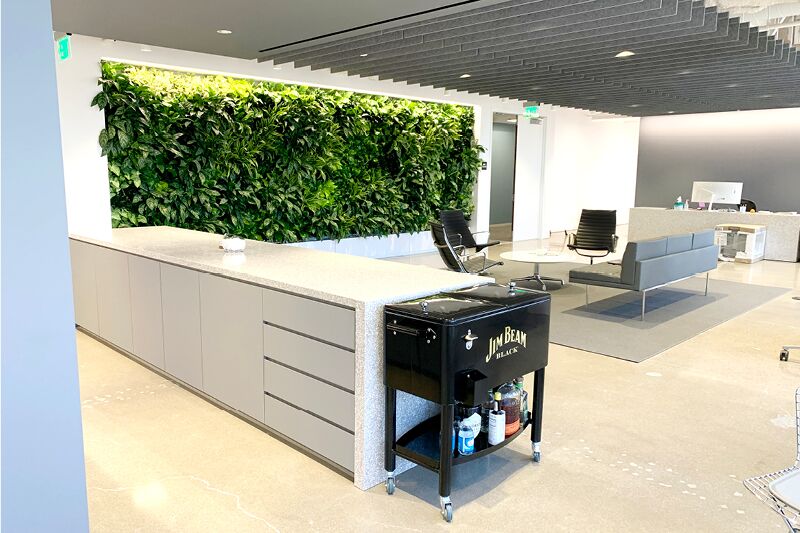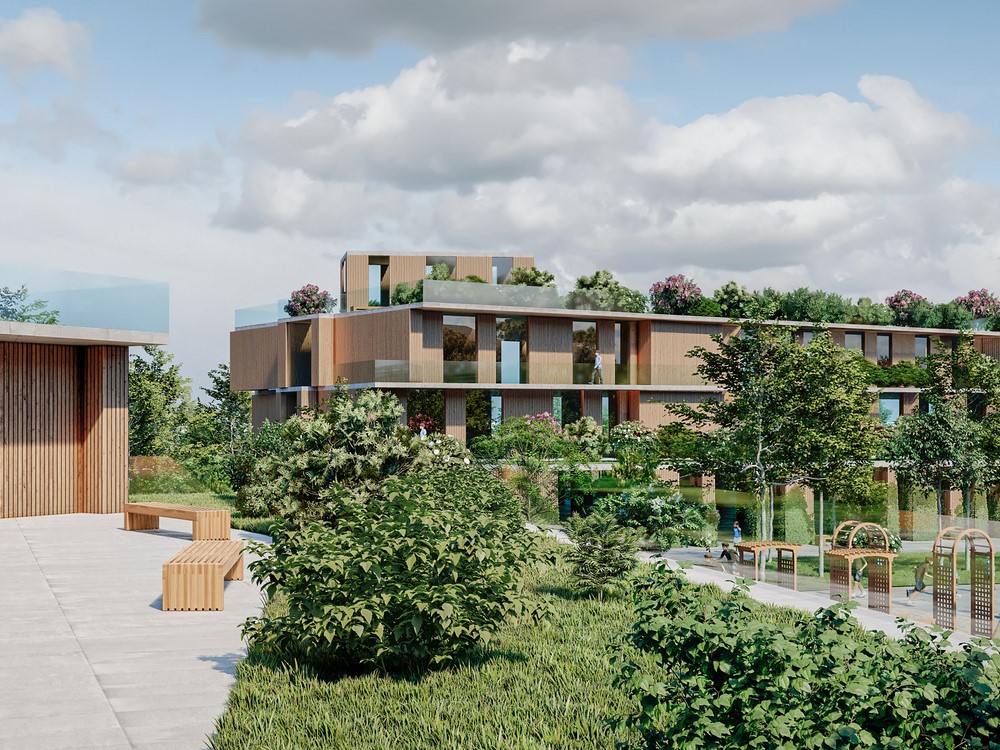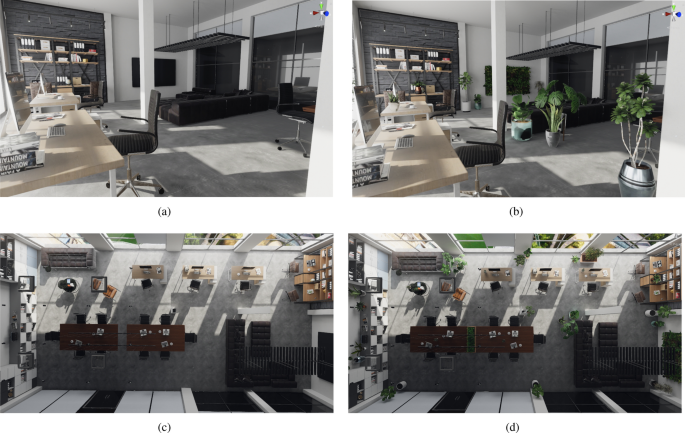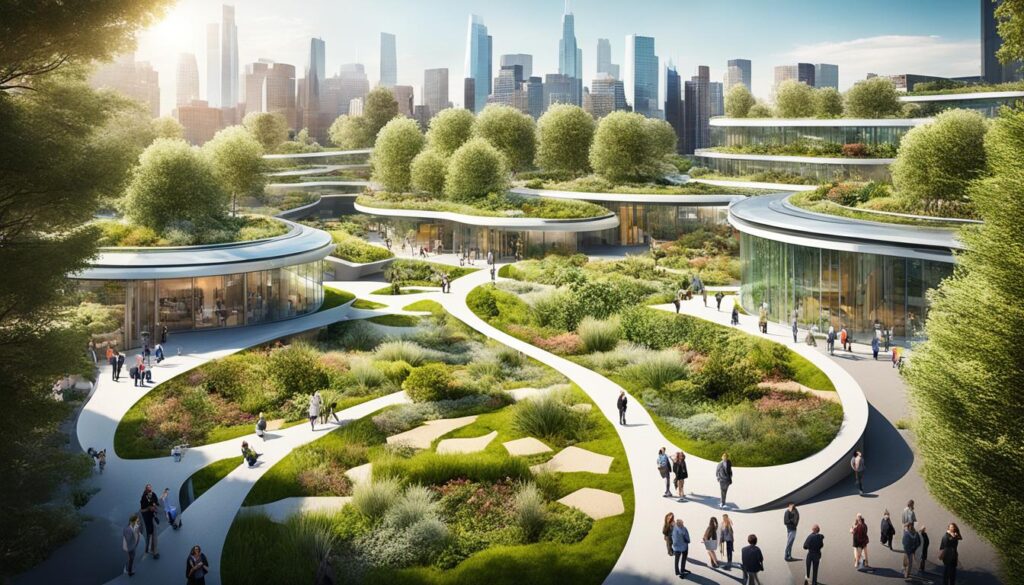Revolutionizing Green Wall Systems: Innovative Solutions for Sustainable Living
**Green wall systems** are revolutionizing urban environments by reintroducing nature into our **concrete jungles**.
These systems range from **living walls** adorned with a diverse array of plant life to **modular systems** that can be adapted to fit various spaces, providing multiple options for enhancing one’s surroundings.
This article examines the different types of **green wall systems**, their associated benefits, and essential considerations to keep in mind when selecting one.
It also highlights how innovative designs, such as **hydroponic** and **edible walls**, can significantly improve both the aesthetic appeal and sustainability of urban areas.
Types of Green Wall Systems
Green wall systems represent an innovative advancement in sustainable architecture, encompassing a range of vertical garden types such as living walls, panel systems, tray systems, modular systems, and pocket systems.
These systems not only enhance the aesthetic appeal of designs but also offer substantial environmental benefits. Furthermore, they play a vital role in urban greening initiatives by establishing biodiverse habitats in both residential and commercial settings.
1. Living Walls
Living walls represent a significant category of green wall systems that incorporate a diverse array of plants to create visually appealing and functional vertical gardens. These installations substantially enhance air quality and promote sustainable landscaping practices.
These innovative structures not only improve the aesthetic value of buildings but also contribute to energy efficiency by providing insulation and mitigating the urban heat island effect.
When selecting plants for living walls, it is essential to assess the specific environmental conditions, including sunlight exposure and moisture availability, to ensure optimal plant growth. Utilizing drought-resistant species is particularly advantageous in arid regions, whereas shade-tolerant varieties are more suitable for less sunny urban environments.
The irrigation systems employed in living walls are typically automated, delivering water directly to the roots of the plants, which minimizes waste and fosters healthy growth. Regular maintenance, including pruning and pest monitoring, is critical to maintaining the vibrancy and functionality of these vertical gardens.
Ultimately, living walls are instrumental in enhancing biodiversity, supporting urban wildlife, and positively contributing to the ecological framework of metropolitan areas.
2. Panel Systems
Panel systems serve as a versatile option for green walls, utilizing prefabricated panels that facilitate straightforward installation and offer a flexible design aesthetic suitable for various architectural applications.
These systems are constructed from lightweight materials, which significantly reduce the structural load while enhancing the overall design flexibility of buildings. The modular design allows for easy customization, enabling architects to create visually striking facades that can adapt to diverse environments.
The installation techniques employed in these systems are characterized by a simple assembly process that not only conserves time but also minimizes disruption during implementation. Furthermore, these panel systems are designed with energy efficiency in mind, featuring components that reduce heat absorption and enhance insulation.
Regular maintenance is made more manageable due to the accessible design of the panels, ensuring that they remain visually appealing while contributing to a sustainable architectural landscape.
3. Tray Systems
Tray systems are innovative green wall structures that employ soil-less systems or hydroculture techniques, ensuring efficient moisture retention and optimal plant health for vertical gardens.
These systems are designed with careful engineering to maximize space while facilitating easy access to both plants and water resources. By utilizing advanced water management strategies, such as drip irrigation and smart sensors, these systems create an environment that significantly reduces water wastage and minimizes the reliance on chemical fertilizers.
In the realm of urban agriculture, tray systems are frequently utilized in rooftops and community gardens, thereby enhancing local biodiversity by providing habitats for beneficial insects and pollinators. Such installations not only contribute to food security in urban areas but also promote a greener and more vibrant urban ecosystem.
4. Modular Systems
Modular systems exemplify a flexible and innovative approach to green wall installations, facilitating user engagement and creativity while enhancing the aesthetic appeal of vertical gardens.
These systems can be customized to accommodate a variety of environments, including urban settings and residential areas, and can be adapted to different climates by integrating plant selections that thrive under specific conditions.
By offering a customizable framework, these installations not only enhance the overall design aesthetic of a space but also foster community involvement through collaborative gardening initiatives.
Furthermore, their educational value is considerable, as they serve as effective hands-on learning tools regarding sustainability and biodiversity. Modular systems are frequently designed for ease of maintenance, rendering them an attractive option for both novice and experienced gardeners.
5. Pocket Systems
Pocket systems represent compact green wall solutions specifically designed for urban greening, providing an effective means to integrate plant health and community gardens into limited spaces.
These innovative systems optimize the utilization of constrained areas, such as balconies and small yards, while significantly enhancing urban biodiversity by attracting pollinators and offering habitats for various species. Their vertical structure accommodates a diverse array of plants, thereby improving both aesthetic appeal and environmental health.
Maintenance of these systems is relatively straightforward, requiring regular watering and occasional pruning, which encourages community members to actively participate in the care of these green spaces.
By promoting collaborative efforts, pocket systems not only advance sustainable landscaping practices but also strengthen neighborhood connections and raise awareness about the importance of green initiatives in densely populated areas.
Benefits of Green Wall Systems
Green wall systems offer numerous advantages, including the enhancement of air quality, mitigation of the urban heat island effect, promotion of biodiversity, and improvement of design aesthetics in both residential and commercial settings.
Additionally, these systems play a significant role in supporting climate resilience and advancing urban greening initiatives.
1. Improves Air Quality
One of the most significant advantages of green wall systems is their capacity to enhance air quality by effectively reducing pollution and improving indoor air purification through natural processes.
These innovative structures function as living air filters, capturing airborne pollutants such as volatile organic compounds (VOCs) and particulate matter. Research indicates that green walls can decrease the presence of toxic substances by up to 60%, thereby significantly benefiting the health and well-being of occupants.
Furthermore, they contribute to improved atmospheric moisture levels, which can enhance comfort and productivity. Studies conducted by the National Center for Biotechnology Information reveal that indoor plant systems, including green walls, can increase humidity by approximately 20% to 30%, a factor essential for respiratory health.
This dual function of filtering air while promoting a more humid environment emphasizes the comprehensive wellness benefits that these living walls provide to urban residents.
2. Reduces Urban Heat Island Effect
Green wall systems play an essential role in mitigating the urban heat island effect by providing natural cooling and heat insulation, which enhances energy efficiency in buildings.
These innovative structures not only improve the aesthetic appeal of urban landscapes but also act as a barrier against heat absorption. By utilizing plants with transpiration properties, green walls actively cool the surrounding air as moisture evaporates from the foliage. The thermal mass provided by the soil and the plants themselves contributes to temperature stabilization, rendering these systems particularly effective.
Successful implementations of green walls can be observed in cities such as Paris, where installations have transformed facades into vibrant vertical gardens that help combat heat during the hot summer months. Similar initiatives in Melbourne have demonstrated a significant reduction in surrounding temperatures, highlighting the potential of these green infrastructures to enhance the livability of urban areas.
3. Enhances Aesthetics
The aesthetic enhancement offered by green wall systems is indisputable, presenting visually appealing designs that seamlessly integrate into various architectural styles and environments.
These systems not only revitalize urban landscapes but also create a striking contrast against concrete backdrops. By incorporating a diverse array of plant species, designers can cultivate unique textures and colors that are visually captivating.
Recent advancements in modular planting and irrigation technology have facilitated customization options, enabling flexible designs that can adapt to varying environmental conditions. This personalization increases visual interest, transforming uninspiring facades into vibrant living murals that significantly enhance the overall beauty of cityscapes.
Additionally, the integration of these green wall systems often promotes sustainability, effectively bridging the gap between nature and urban development.
4. Increases Biodiversity
Green wall systems substantially enhance biodiversity by establishing habitats for urban wildlife, thereby augmenting ecological impact and supporting native plant species.
These vertical gardens function as living structures that not only enhance the aesthetic appeal of urban environments but also serve as essential corridors for wildlife. For example, they offer critical resting and foraging locations for birds, insects, and small mammals, rendering urban areas more accommodating to a variety of species.
Notable implementations of green walls can be observed in metropolitan regions such as Paris and Sydney, where native flora flourishes and attracts essential pollinators, including bees and butterflies.
By incorporating a diverse range of plant species, these systems bolster resilience to pests and diseases, further promoting a balanced ecosystem that fosters interactions between animals and plants.
Factors to Consider When Choosing a Green Wall System
When selecting a green wall system, it is essential to consider several critical factors, including the location and climate, maintenance requirements, and overall cost and budget.
This comprehensive evaluation ensures that the installation effectively meets both aesthetic and ecological objectives.
1. Location and Climate
The location and climate are critical factors in selecting the appropriate green wall system, as they have a direct impact on sunlight exposure, plant health, and overall system performance.
Consideration of factors such as temperature fluctuations, humidity levels, and seasonal variations is essential to ensure that the selected plants can thrive effectively. For example, a green wall situated in a tropical zone may benefit from heat-tolerant species capable of withstanding higher humidity, whereas a green wall in a cooler, temperate climate might prioritize cold-resistant varieties.
The resilience of the selected plants will determine not only their survival but also the aesthetic and ecological contributions they provide to their environment. Implementing sustainable horticultural practices that are aligned with local conditions can enhance the longevity and adaptability of the green wall system, thereby promoting environmental harmony.
2. Maintenance Requirements
Maintenance requirements are essential for the sustainability of green wall systems, encompassing plant care, irrigation systems, and drainage systems to promote healthy vegetation.
To achieve optimal performance from these living structures, it is imperative for users to adopt a comprehensive approach that includes regular monitoring and necessary adjustments.
Proper plant care begins with selecting species that are well-suited to the specific environmental conditions of the installation. Efficient irrigation management is critical; users should implement automated systems that not only conserve water but also adapt to the moisture requirements of the plants.
Regular assessments of nutrient levels and drainage effectiveness further enhance system performance, ensuring that the plants receive the necessary support.
Engaging with the system through consistent maintenance not only promotes healthier plants but also fosters a stronger connection between users and their vibrant green spaces.
3. Cost and Budget
Evaluating the costs and budget is crucial when implementing a green wall system, as the initial investment can result in long-term savings through enhanced energy efficiency and decreased maintenance costs.
Although the financial commitment required for establishing these living structures may initially appear formidable, both businesses and homeowners quickly recognize the potential for substantial returns on investment. By improving insulation and air quality, these systems can significantly lower energy bills over time, thereby representing a prudent investment in a sustainable future.
Additionally, the aesthetic advantages of green walls can enhance property value, attracting clients or tenants who prioritize environmentally friendly practices.
In this context, while the upfront costs necessitate thorough consideration, the prospect of reduced operational expenses and a positive contribution to environmental sustainability ultimately reinforces the viability of these green initiatives.
Innovative Green Wall Systems
Innovative green wall systems, including hydroponic green walls, vertical gardens, solar green walls, and edible green walls, are significantly transforming urban landscapes.
These systems offer sustainable solutions for plant integration and promote eco-friendly design practices.
1. Hydroponic Green Walls
Hydroponic green walls employ soil-less systems to cultivate plants, thereby ensuring optimal water management and enhancing overall plant health and sustainability in urban environments.
These innovative systems not only conserve water—utilizing up to 90% less than traditional farming methods—but also promote accelerated growth rates due to the direct access plants have to essential nutrients.
For practitioners of urban agriculture, this represents a more efficient approach to growing fresh produce without the necessity of extensive land. Additionally, the low maintenance requirements associated with hydroponic setups make them an appealing option for urban residents seeking to incorporate plant care into their busy lifestyles.
Whether it involves cultivating leafy greens on a bustling rooftop or growing herbs on a balcony, these systems are fundamentally transforming the capacity of cities to sustainably produce their own food.
2. Vertical Gardens
Vertical gardens represent an impressive form of green wall systems that effectively integrate urban greening with design aesthetics, offering numerous biodiversity benefits in both public and private spaces.
These innovative structures not only serve as visual enhancements but also revolutionize the potential for plant integration in urban environments where space is often limited. The design possibilities for vertical gardens are extensive, ranging from elaborate artistic installations to straightforward, functional panels that can transform bare walls into vibrant green landscapes.
By incorporating native and pollinator-friendly plants, vertical gardens significantly enhance the ecological impact of urban areas, thereby promoting the role of community gardens in supporting local wildlife.
Additionally, they contribute to improved air quality and provide shade, effectively combating urban heat and fostering a sense of community among residents who engage with these dynamic green ecosystems.
3. Moss Walls
Moss walls represent a distinctive green wall system, recognized for their low maintenance requirements and remarkable ability to enhance air quality, making them an appealing option for indoor environments.
These innovative installations utilize the natural filtration properties of moss to effectively eliminate toxins from the air, thereby significantly improving the indoor atmosphere. By absorbing carbon dioxide and releasing oxygen, moss walls contribute to a healthier environment while simultaneously offering a visually appealing feature that serves both aesthetic and functional purposes.
The versatility of moss walls enables their integration into a variety of design settings, including commercial buildings, offices, and private residences, thereby fostering a serene ambiance that promotes well-being. Additionally, the acoustic dampening properties of moss provide another advantage, rendering them an attractive choice for individuals seeking to enhance both air quality and noise levels within a space.
4. Solar Green Walls
Solar green walls integrate renewable energy solutions into their design, employing green technology to enhance energy efficiency while contributing to urban landscaping initiatives.
By seamlessly combining solar panels with living wall systems, these innovative structures not only offer aesthetic benefits but also generate clean energy. This integration enables buildings to harness solar power while promoting biodiversity and enhancing air quality.
Furthermore, the combination of solar panels and green walls can lead to significant reductions in energy costs, as the vegetation provides natural insulation for the building, resulting in decreased heating and cooling requirements.
For instance, a commercial property that adopts this technology can observe a substantial reduction in its overall carbon footprint, illustrating the effectiveness of holistic solutions in promoting sustainable practices within contemporary urban environments.
5. Edible Green Walls
Edible green walls represent an innovative solution for urban agriculture, enabling communities to actively participate in food production while promoting sustainable practices and enhancing biodiversity.
These vertical gardens effectively transform otherwise underutilized spaces into vibrant, food-producing systems, while also fostering social connections among residents. Engaging local inhabitants in the cultivation and maintenance of these projects instills a sense of shared responsibility and community pride.
Furthermore, edible green walls contribute to the reduction of urban carbon footprints, as they naturally filter air pollutants and sequester carbon.
Additionally, this green infrastructure provides crucial habitats for urban wildlife, offering shelter and sustenance for various species. Therefore, these installations not only promote sustainable agricultural practices but also play a significant role in enhancing local ecosystems.
Frequently Asked Questions
What are innovative green wall systems?
Innovative green wall systems are vertical structures that are designed to support plant growth while also providing benefits such as improved air quality, insulation, and soundproofing.
How do innovative green wall systems work?
Innovative green wall systems use a variety of techniques and technologies to support plant growth on a vertical surface. This can include the use of soil, hydroponics, or other sustainable methods.
What are the benefits of using innovative green wall systems?
Innovative green wall systems offer numerous benefits, such as improving air quality by removing pollutants, reducing energy consumption by providing insulation, and creating a more pleasant and aesthetically pleasing environment.
Can innovative green wall systems be used in any building?
Yes, innovative green wall systems can be installed in a variety of buildings, including residential, commercial, and industrial spaces. They can also be used indoors or outdoors depending on the design and purpose.
Are there different types of innovative green wall systems?
Yes, there are several types of innovative green wall systems available, including living walls, green facades, modular systems, and more. Each type offers unique benefits and features, so it’s important to choose the right one for your specific needs.
Do innovative green wall systems require a lot of maintenance?
The maintenance required for innovative green wall systems will depend on the type and design. Some systems may require regular watering and pruning, while others may be self-sufficient. It’s important to consult with a professional to determine the level of maintenance needed for your chosen system.

I’m Bruno, an architect with a deep passion for Biophilic Design in Urban Architecture. Throughout my career, I’ve focused on integrating natural elements into urban planning, and I created this site to share my insights and foster a deeper understanding of how biophilic principles can significantly enhance urban living. Dedicated to sustainable development, I continually explore innovative design solutions that promote both environmental and human well-being in city landscapes.














Publicar comentário